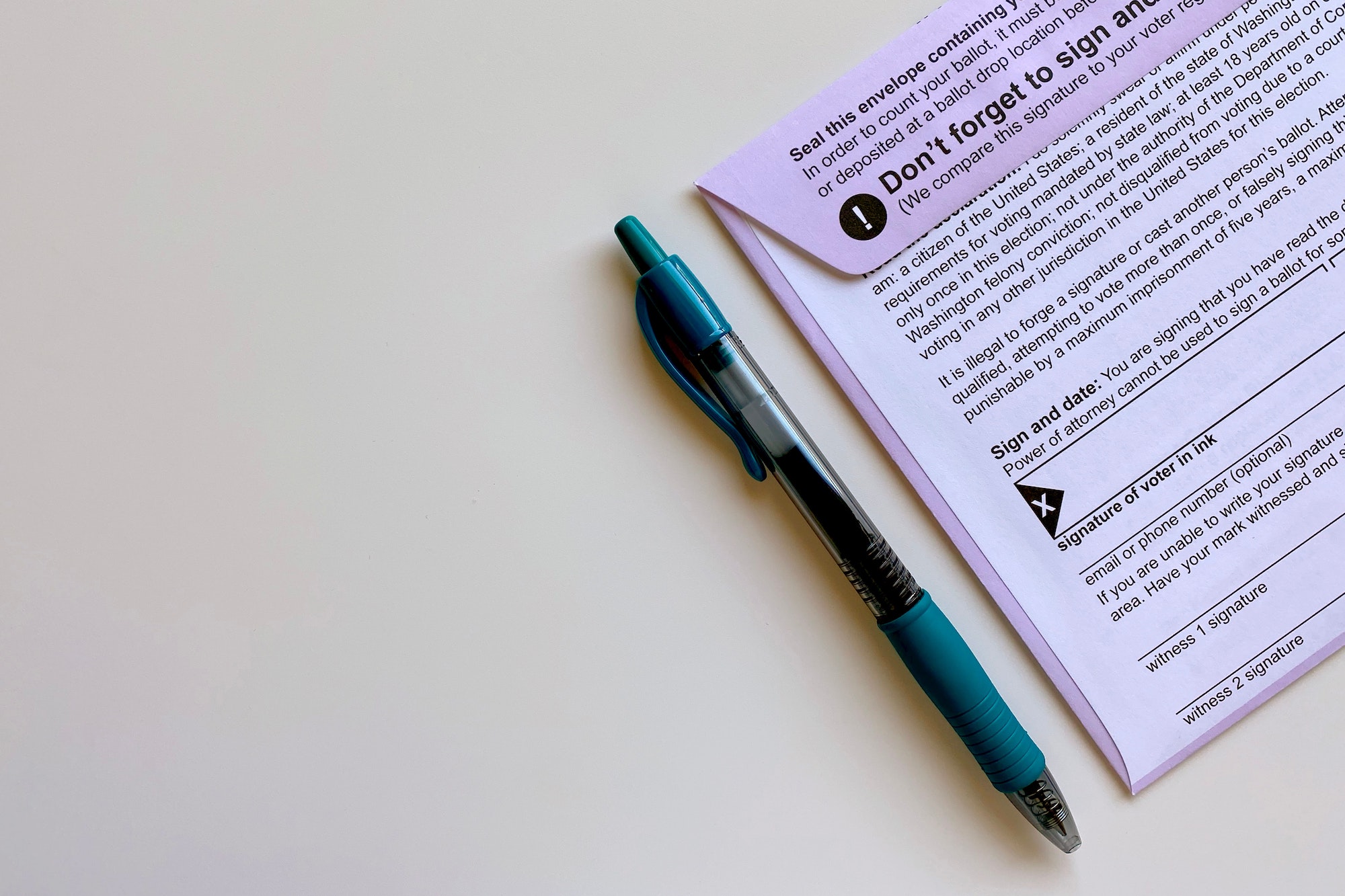Everything You Need to Know About Mail-in Voting or Absentee Voting

Reminder: Election Day is Tuesday, November 5, 2024.
When you think about voting, you may think about standing in line at your neighborhood polling place with your friends and neighbors, waiting your turn to cast a vote you feel proud of — one that will result in laws and policies that support your finances and your values.
But that’s not the only way to vote. And for many people, it’s certainly not the most convenient or safe way to vote.
Absentee voting, or voting by mail, has become much more mainstream lately. In fact, it’s not new: since the Civil War, Americans have cast ballots by mail. And whether you vote in person or by mail, it’s still public record that you took the time to cast a vote and participate in democracy.
But like everything else voting-related, the rules for absentee voting vary state by state.
Here is an easy, four-part checklist for absentee voting:
1. Check your state’s mail-in voting rules
Some states allow anyone to vote absentee and do not require a reason. Other states have very specific absentee voting requirements. An example of a specific requirement for mail-in voting would be that you will be absent from the county on election day or are required to work a shift of 10 hours or more that conflicts with polling hours. Other states are automatically mailing absentee ballots to every single registered voter.
Check my state’s absentee ballot rules
If you’re in a state where you’ll automatically get a ballot in the mail, make sure your mailing address is correct on your voter registration.
Check my voter registration status
2. Request or register for voting by mail
If you want to change to vote by mail, Vote.org has a wonderful online tool for requesting an absentee ballot in any state.
Before you request a ballot, check your state’s absentee ballot application deadline.
Check my state’s absentee ballot application deadline
Alternatively, you can also contact your local election office for an application, which you can mail, fax, or email back.
3. Know the absentee voting deadline: each state has its own completed absentee ballot deadline
When do vote-by-mail ballots arrive where you live?
When does absentee voting start in your state?
By when should your vote by mail be submitted to be counted?
These are some questions you need to find the answers to because they vary from one state to another. If you’re not sure where to get started, click here to check your state’s absentee ballot deadlines.
Completed absentee ballots must be received by your state’s deadline to count in the election. Some states count mail-in voting when the ballot is postmarked, and others count when it is received.
For instance, in Texas, your voted absentee ballot must be postmarked one day before Election Day and received by the day after Election Day. In California, it must be postmarked by Election Day and received no later than 17 days after. And in Florida, it doesn’t matter when you send it, but your ballot must be received by 7 p.m. on Election Day.
Check my state’s absentee ballot deadlines
4. Find out the absentee voting locations and submit your vote-by-mail return envelope
Most people return their voted absentee ballot by mail. But you can also hand-deliver your ballot to a designated location or drop box. Contact your local election office to find out where.
More absentee ballot and early voting tips
What should you do if you make a mistake, lose, or don’t receive your ballot?
Vote in person early or on Election Day. In some states, you may need to request a provisional ballot, which will be counted once the election office verifies that they do not have a mail ballot from you.
Change your mind and now want to vote in person?
If you received an absentee ballot but change your mind and want to vote in person, you might be able to on Election Day, depending on your state’s election rules. Here’s what you should know:
- You’ll take your absentee ballot to your designated polling place on Election Day.
- Depending on your state’s rules, you might exchange your uncast absentee ballot for an in-person ballot, or
- Complete your absentee ballot and hand it in, or
- Cast a provisional ballot.
Every state has different rules, so check with your local election office for specific procedures.
BONUS Tip: You can also vote early to avoid the crowds!
If you prefer to vote in person, skip the lines on Election Day and take advantage of early voting where available. Voting early will help you avoid Election Day crowds, ensure shorter lines on Election Day for those who must vote then, and is a great way to help protect your community, especially the most vulnerable members of your community.
When we vote early, we ensure that last-minute problems will not keep us from casting our ballot and we help reduce lines at the polls on Election Day.